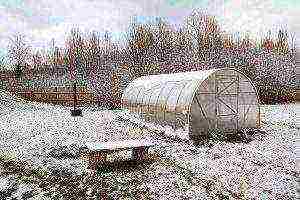Content
Stegastes fish have a delicate stomach and jaws that are unable to chew food. In order to somehow feed themselves, the fish create entire plantations of red algae in the oceans. The features of the process were studied by Japanese scientists.
Agriculture is not at all a human prerogative. Scientists give many examples of how animals themselves create plantations on which they grow food for themselves (usually mushrooms). For example, leaf-cutting ants collect plant leaves, grind them, and basidiomycete fungi begin to grow on the resulting substrate. Moreover, the ants do not eat the whole mushroom. They bite off conidia (fungal reproductive organs filled with spores) and wait for the juice to come out on the stem. Leaf-cutting ants feed on them. And the bitten off part is used to fertilize the plantation. Another example is mushroom plantations that grow woodworm beetles inside trees. Entering a tree to lay eggs, female beetles transfer fungal spores into the hollows. When they germinate on a nutrient medium, caring females begin to care for them, and then feed them to the larvae.
Scientists from Kyoto University and Ehime University (Japan), led by Dr. Hiroki Gata, studied the amazing ability of dark stegastes fish to grow the red algae Polysiphonia sp. According to scientists, these fish not only drive away competitors trying to eat their crops, they also prevent other algae from entering the community.
Based on a comparative analysis of the DNA of algae from such plantations in the Indian Ocean and the western part of the Pacific, scientists have come to the conclusion that fish periodically weed their possessions. Moreover, weeding occurs at the level of the genus. As soon as the stegastes notice algae of a different kind on their possessions, they immediately pull them out.
According to the authors of the work, such a relationship is an example of mutualism (a kind of symbiosis). This means that all participants in these relationships receive some benefit from coexistence. By the way, in agriculture, exactly the same relationship develops between a person and, for example, cultivated plants.
According to scientists, care is simply necessary for algae, otherwise they simply die. First, many herbivorous marine life like to eat them. And they recover after taking a bite of them, very slowly. Secondly, these algae are completely uncompetitive: if any other species is introduced into their population, they disappear after some time, making room for it. So these algae are completely dependent, and they cannot live without stegastes fish.
On the other hand, it is no coincidence that the stegastes chose Polysiphonia algae for their plantations. These fish are big finicky and feed only on such algae. “The acidity of their stomachs is quite high, although they are able to digest plant material, but only so tender. In addition, they cannot chew food, so algae with a crusty layer is simply too tough for them, ”the authors of the work explain.
Algae plantations were not the same in all oceans studied. According to scientists, somewhere the planting consisted of monoculture, and somewhere of several species of Polysiphonia. According to the authors, these differences are associated with which populations of algae stegastes initially colonize.
The animals are raised specifically for food!
This is perhaps the weakest argument. Animal husbandry is a business, so it is clear that it is demand that creates supply.And if one person does not eat meat, the world will raise and kill about 5 cows, 20 pigs, 29 sheep, 760 chickens, 46 turkeys, 15 ducks and 7 fewer rabbits. This is exactly how much a person eats on average in his life.
The Mahabharata says that according to the laws of karma, the one who brings meat or sends for it, the one who dismembers the body of the animal, and the one who buys, sells or cooks meat and eats it will receive retribution for killing an animal.
There is a video on the Internet from some Western comedy show. The idea of the filmed experiment is very simple.
As part of a supermarket promotion, a cheerful chef invites everyone to taste fresh sausages. People come up, eat, smile and thank. But at some point the cook runs out of sausages. He asks the buyers to wait a little, takes a small live pig, stuffs it into the "meat grinder" from which he just got these sausages, and says: "Now I will make more fresh ones!"
I think you have already understood what was the reaction of people who just ate fresh sausages with smiles.
Current version of the page so far
not checked
experienced participants and may differ significantly from
versions
, accessed November 25, 2015; checks require
9 edits
.
Current version of the page so far
not checked
experienced participants and may differ significantly from
versions
Retrieved November 25, 2015; checks require
9 edits
.
Food of animal origin - This is food that a person receives directly from animals or in the process of its further processing. Animal foods include meat, fish, seafood, shellfish, crustaceans, milk, dairy products, honey, eggs and caviar. These foods are a source of biologically important proteins, saturated fat, B vitamins, fat-soluble vitamins, phosphorus, and assimilable iron. Some individuals completely or partially refuse food of animal origin of their own free will or because of the presence of food allergies.
The role of animal products in nutrition
Food of animal origin is a key source of vitamin B12; plant food does not contain this vitamin in human assimilable forms. Vitamins such as B12, groups D and A, found in animal foods, may be present in some plant foods. For example, tofu can replace meat (both products contain a sufficient amount of protein), some types of seaweed and vegetables, in particular kombu and cabbage, can replace milk (products contain a sufficient amount of calcium). Zinc is mainly found in animal products. It is rarely found in plant foods. The exception is pumpkin and sesame seeds.
Refusal to eat food of animal origin may be due to cultural or religious reasons. In this case, it is necessary to maintain optimal levels of nutrients through nutritional supplements. Most often, vegetarians have a lack of nutrients in the body, not because of the lack of animal products in their diet, but because of the insufficient amount of plant products consumed, which are analogous to food of animal origin. Therefore, it is possible to follow a healthy diet that includes all the necessary macro and micronutrients, consuming only plant-based products (for example, vitamin B12 can be obtained from dietary supplements, if animal products are not included in the diet at all).
Most people eat a balanced diet that includes foods of both animal and plant origin and meets all the needs of a particular organism and its energy costs.But not the entire population has the opportunity to receive all vital nutrients, especially those found in animal products. The most vulnerable category of people in this regard are pregnant women, infants and children in developing countries.
Consequences of Nutrient Deficiency
Nutrients such as vitamin A, B12, riboflavin, calcium, iron and zinc, which are abundant in animal foods, play a key role in the growth and development of children. An insufficient supply or, on the contrary, an excess of these substances in the body can provoke delayed development, anemia (iron deficiency anemia or macrocytic anemia), rickets, nyctalopia, impaired cognitive functions, weakening of working capacity and mental disorders. Some of these consequences, such as impaired cognitive functions due to a lack of iron in the body, can even be fatal.
Impact of production of food of animal origin on the environment
According to a 2006 United Nations initiative, livestock production is one of the key contributors to the negative impact on the environment worldwide. As a result, there are large emissions of greenhouse gases into the atmosphere, air and water pollution, climate change, and overuse of natural resources. Therefore, eating food of predominantly vegetable origin could have a more beneficial effect on the state of the environment. “The environmental impact of agriculture is expected to increase significantly due to population growth and increased consumption of animal products. Unlike fossil fuels, it is difficult to find an alternative to food: people have to eat. Reducing the impact will be possible only with a significant change in nutrition around the world, reducing the proportion of animal products in the human diet. " Regardless, raising certain types of animals can be sustainable. According to the 1976 conclusion of the Farallon Institute for Advanced Ecosystem Research, raising rabbits and chickens for further consumption does not have a significant negative impact on the environment. In addition, raising goats (for both milk and meat) is also environmentally friendly and approved by some conservation organizations.
see also
- Vegetarianism
Notes (edit)
Links
Animal source foods // Wikipedia in English (GFDL license; source revision history) ./ Russian translation as of November 13, 2015


